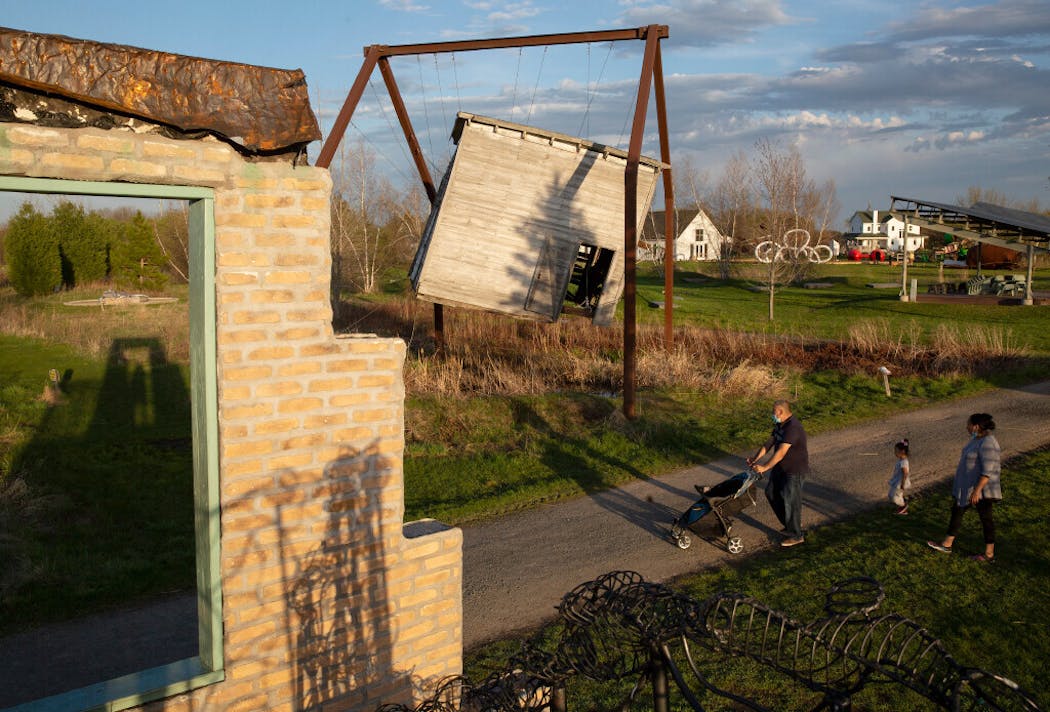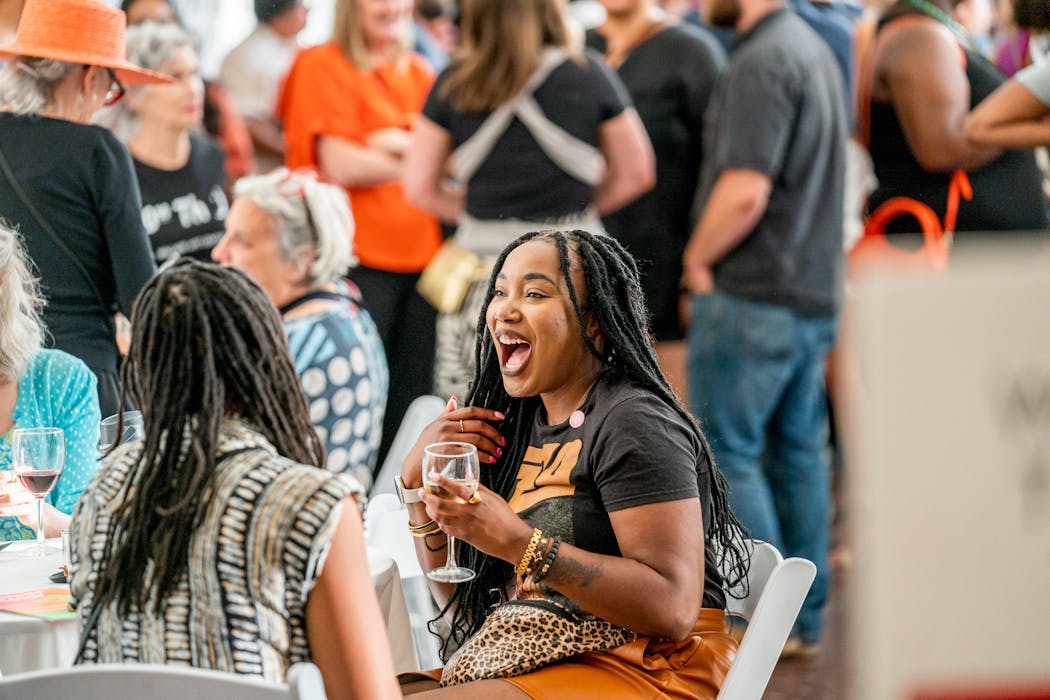In the spring of 2022, the Minnesota Orchestra surveyed its audiences, asking: What would you like to see from us, going forward?
One answer: earlier concerts.
So this fall, the orchestra will debut a new schedule that includes Saturday concerts that start at 7 p.m., rather than 8. Also on the calendar — 2 p.m. Saturday matinees conducted not by an assistant but by the new music director himself, Thomas Søndergård, who also will chat with attendees during post-concert Q&As.
"We're giving audiences a lot of options," said Michelle Miller Burns, the orchestra's president and CEO. "And I think that is going to resonate, thinking about some of the new habits that people developed during COVID.
"How do we continue to adapt and be responsive to our audiences? Our ears are open."
This fall, orchestras and theaters, sculpture gardens and dance troupes are presenting new efforts — from early start times to party-like art openings — to lure back audiences with changed habits, preferences and outlooks from the turbulent period defined by the pandemic and the murder of George Floyd. To lure newbies, too.
For organizations that had strong summers, it's a season of optimism. For others, it's a continuation of a high-wire act.
The Walker Art Center counted more visitors this summer than it had since 2017, far before COVID-19 hit, said Rachel Joyce, associate director of public relations. She credited the colorful Pacita Abad show, the popular artist-designed mini-golf and folks' increasing comfort returning to indoor spaces.
The multidisciplinary center also has been tweaking its show openings to welcome new audiences. Many exhibitions are now debuting on Thursdays, when admission is free, with food from popular chefs. That's the model for October's screenings of filmmaker Alanis Obomsawin's work.
The approach is drawing new faces, Joyce said. "They're coming in for the experience, and then they're staying for the art."
There's a divide among arts organizations right now, said Colleen Dilenschneider, founder of Impacts Experience, a market research firm that advises nonprofits. Exhibit-based institutions, such as art museums and science centers, are rebounding, she said. Using national data, her firm predicts that the market potential for exhibit-based organizations is 98.6% of their 2019 attendance.
But performance-based institutions? "Those are the ones struggling to get back," she said. Her firm estimates that they'll hit just 83.5% of their 2019 attendance. "These organizations may not reach 2019 attendance at all — or, at least for a very long time," she wrote in a recent report.
For one, audiences are aging, and performing arts organizations are not bringing in younger, more diverse attendees at the same rate, a trend that existed long before COVID. Then COVID shifted the kinds of institutions people visit in ways that endure today. The winners: outdoor institutions that allowed for freedom of movement.
'Squeezed from both ends'
Places like Franconia Sculpture Park.
Attendance at the park, about an hour north of Minneapolis, swelled 25% during the pandemic, or fiscal year 2020-21. Those numbers remained steady the following year, said Sara Rothholz Weiner, interim executive director.
"Every visitor to Franconia becomes a super fan," she said.
Both COVID and the murder of Floyd highlighted the need for safe, welcoming refuges. The sculpture park, which offers free admission, "wanted to make sure that people of all walks felt very, very welcome here," Rothholz Weiner said.
It is working with Native American speakers to post signs in Ojibwe, Dakota and Ho-Chunk. This fall, it is partnering with the Emerging Curator's Institute to present "Inventadas," which features "women, trans, and non-binary Latinx interdisciplinary artists" addressing issues tied to gender and resistance. For that show, the park is figuring out how to offer Spanish translations.
"We're learning," Rothholz Weiner said. "We're definitely pushing forward actual activities that are around access, in all the many ways of thinking about it."
Each time dance leaders get together, they talk about it like a mystery they're trying to unravel: "What's happening with people post-pandemic that they're not attending performances?" said Abdo Sayegh Rodríguez, executive director of TU Dance, a St. Paul-based professional dance company and dance school.
Sayegh Rodríguez suspects that after the trauma of COVID, audiences are gravitating to light stories, to love stories. Across the country, performances of "The Nutcracker" last year, for example, did very well. But other, reparatory works with social justice roots? "Those works are not getting the same level of attendance," he said.
That leaves TU Dance, which specializes in such works, in a tough spot.
"Things from the income side are not looking good, although we're hopeful, because it's getting better," Sayegh Rodríguez said. "At the same time, every single vendor, from garbage collection to rent, has gone up.
"We're being squeezed from both ends."
His nonprofit is teaming up with three other Twin Cities dance organizations to put on joint panels and other programs, hopefully drawing new dance lovers from colleges and universities, among other places.
A positive vibe
The Trylon Cinema, a 90-seat movie theater in south Minneapolis, sold more tickets in 2022 than it did in 2019.
"We're doing revival cinema, so some things click and some things don't," said Barry Kryshka, the nonprofit's executive director. But on the whole, "our recovery is pretty much complete."
The audience, though, has shifted. "We have seen a skew toward a younger audience and a skew toward younger films," he said, maybe because of some continuing hesitation from older audience members concerned about COVID.
But the theater will keep showing films from the '30s, '40s and '50s, keep unearthing oddities. That's the nice thing about being a nonprofit, Kryshka said. "If we have a 100% successful quarter, that means we need to get bolder next time." A disastrous quarter might mean becoming safer — but only for a bit.
"If we're consistently getting people for everything we do, it probably means we should be getting a little more daring with what we're doing."
Kryshka saw "Barbie" at the nearby Riverview Theater, which was packed. To him it signaled a broader return to movie theaters, to the joy of seeing films with friends and strangers.
"The vibe of it was where it needs to be," he said. "And I did feel like I hadn't seen that in three years."
Maybe because of its continued programming through the pandemic, the Minnesota Orchestra didn't experience the "scary" drop in attendance that the New York Times reported at other orchestras last fall.
The state's largest performing arts nonprofit ended its 2021-22 season with an average audience of 78% capacity. The season that just concluded rose to 82%. Subscription sales for the coming season, featuring its new Danish conductor, are tracking ahead of last year, too, Burns said.
"We're not quite back to pre-pandemic numbers," she said. "But we are definitely closing that gap in what I think of as a journey back. We knew that it wouldn't be a light switch."



